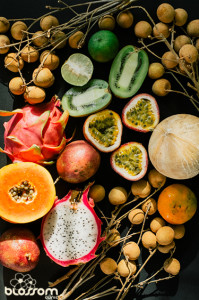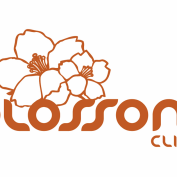Contributed by Liz Richards, L.Ac.
 Back when I first moved to Portland, Oregon in 1997, I met a starry-eyed young man who was on a rainbow diet. He showed me how he had attempted to get every color food on his Potluck plate. This made an impression on me, but I also had my judgment about the guy. It took me about 10 years and my own enlightening “a-ha” moment to finally get what he was talking about.
Back when I first moved to Portland, Oregon in 1997, I met a starry-eyed young man who was on a rainbow diet. He showed me how he had attempted to get every color food on his Potluck plate. This made an impression on me, but I also had my judgment about the guy. It took me about 10 years and my own enlightening “a-ha” moment to finally get what he was talking about.
I have realized that incorporating colorful food into my diet is easy, fun, and a great way to get all of my vitamins through food without thinking too much about it. I have been making an effort to gather at least 2 produce items of each color in my grocery cart every week. My recent shopping trip produced red and orange beets, red and green apples, delicata squash, bananas, broccoli, kale, blueberries, and purple potatoes. Purple is the hardest, but a little purple cabbage, purple potatoes or purple grapes work great.
When the kids help out, I end up with some interesting things in the grocery cart that I wouldn’t normally get, inspiring me to try something new.
What is behind the rainbow diet?
The idea is that each color food has certain naturally occurring vitamins, minerals or anti-oxidants. For example, red foods tend to have lycopenes which are known to help prevent cancer in the body. Many orange foods have carotenoids, which get converted to vitamin A, a substance known to improve vision, immunity, and maintain healthy mucous membranes. It makes sense that if you eat foods of various colors, then you will be getting a lot of the vitamins you need without a lot of fuss.
Here is a little list of foods of each color with the primary food substances in parenthesis:
Red (lycopenes and anthocyanins)
Tomatoes
Red apples
Beets
Red cabbage
Cherries
Cranberries
Pink grapefruit
Red grapes
Red peppers
Pomegranates
Red potatoes
Radishes
Raspberries
Rhubarb
Strawberries
Watermelon
Orange/yellow (carotenoids)
Yellow apples
Apricots
Butternut squash
Cantaloupe
Carrots
Grapefruit
Lemons
Mangoes
Nectarines
Oranges
Papayas
Peaches
Pears
Yellow peppers
Persimmons
Pineapple
Pumpkin
Rutabagas
Yellow summer or winter squash
Sweet corn
Sweet potatoes
Tangerines
Green (chlorophyll, indoles)
Green apples
Artichokes
Asparagus
Avocados
Green beans
Broccoli
Brussels sprouts
Green cabbage
Cucumbers
Green grapes
Honeydew melon
Kiwi
Lettuce
Limes
Green onions
Peas
Green pepper
Spinach
Zucchini
Blue/purple (anthcyanins)
Blackberries
Blueberries
Eggplant
Figs
Plums
Prunes
Purple grapes
Raisins
White (anthoxanthins)
Bananas
Cauliflower
Garlic
Ginger
Jicama
Mushrooms
Onions
Parsnips
Potatoes
Turnips










